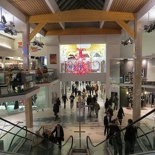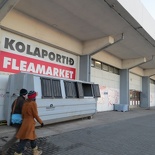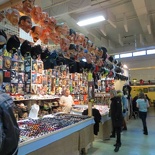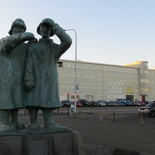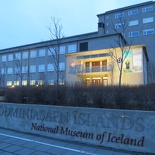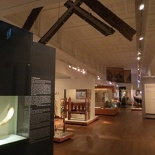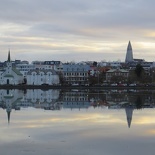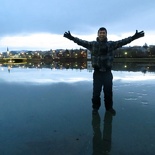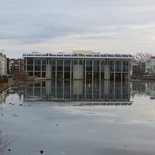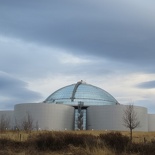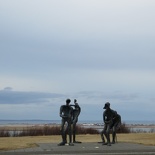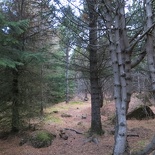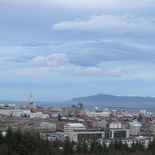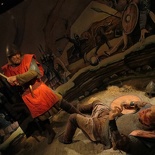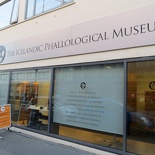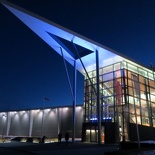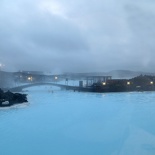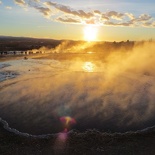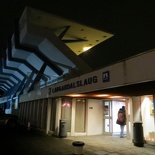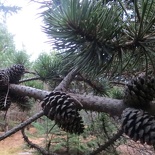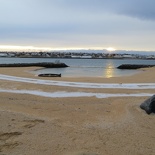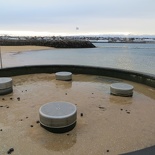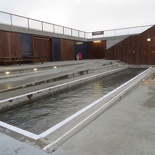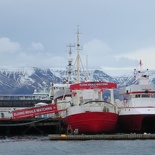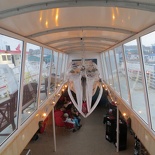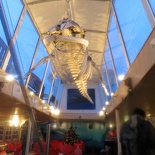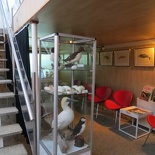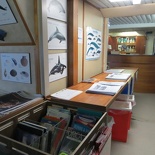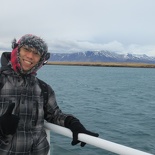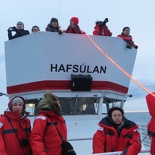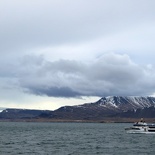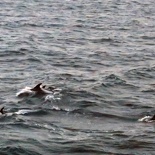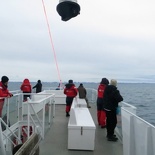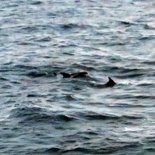Carrying on things to do in Reykjavik, despite the relatively small city it have plenty to offer if you are looking for wares, or even unique Nordic items on sale. These can be found in major shopping malls or even weekend flea markets.
Shopping areas
Ask any local about shopping places in Reykjavik and you will be recommended the Kringlan shopping center. Kringlan is the largest shopping mall in Reykjavík, a large sprawling two storey mall offering a wide variety of ware and services over 180 shops. This includes financial services, a public library, cinema as well as a wide range of restaurants and selection of places to eat.
The mall is also a good indoor place to warm up with a nice cup of hot beverage if it gets too cold and wet outside, especially during the winter months. Winter clothing is exceptionally cheap in Iceland- going up to half the price of an equivalent winter jacket sold in Singapore. The same can be said for most stores in the Europe other than Scandinavia.
The mall provides free hourly shuttle service from the Reykjavik center (Tourist information center, Adalstraeti 2) and HARPA to Kringlan every hourly.
Another nice area to grab bargain and souvenirs will be the Kolaportið flea market. Located in a very inconspicuous warehouse just by the Old Harbor, it is open only during weekends and is Iceland’s only flea market. Held completely indoors, you can buy everything from old records to liquor and fermented shark.
Museums in Iceland
Iceland is a country theming with rich history with records dating back thousands of years ago when the early Viking settlers set foot on the Island. A number of quality museums littered around the city aims to showcase that. One such museum will be The National Museum of Iceland located just off lake Reykjavikurtjorn.
The Icelandic national museum is a state-supported one housing several Icelandic treasures from the early Viking ages, the 800 AD to the present. You can also find the City Hall building just across the lake too. In the winter mornings, the lake is totally reflective from the top frozen ice. It is strong enough to even stand and ice skate on.
Other museums of interest will include The Perlan (The Pearl), home to the Saga Viking museum, event sapces and a restaurant. It is one of the city’s most recognizable buildings located where Bustadavegur road meets Langahlio on the south-side of the city on the top of Oskjuhlio hill.
Reykjavik is well served by domestic buses with good connection to the various city center and facilities, you can find a bus from the city center serving the Perlan.
Over 176,000 trees have been planted on the hillside surrounding Perlan, creating a rare woodland setting in urban Reykjavik. The view from the hill which the Perlan is sitting on offers nice highland views over the city.
A few more bizarre museums downtown will include the Icelandic phallological museum. A private collection of phallic objects real and fabricated on display.
Reykjavik Geothermal Springs
Geothermal energy is everywhere on Iceland and Reykjavik is in a very good position to capitalize on the abundance of this clean renewable energy from heated rocks under the surface of the earth. Electricity in the city and heating (via piped hot water) are all supplied by Geothermal plants, such as the Nesjavellir Geothermal Power Station.
If geothermal heated hot springs and hot tubs are what you desire, Iceland itself is theming with Geothermal features to meet your needs. You don’t need to visit expensive geothermal spas such as the Blue Lagoon to enjoy a Geothermal spa or hot tub to meet your relaxation fix, there are plenty of public places in Reykjavik where you can enjoy a nice hot tub cheaply or even for free.
Laugardalslaug Pool
One such gem will be Laugardalslaug, an outdoor public swimming pool complex located at 30 Sundlaugavegur in the Laugardalur district of Reykjavík. The facility is primarily a sports complex, home to a stadium, multi-purpose sports grounds, a soccer field, a botanical garden & even a small zoo. Laugardalslaug also spots an outdoor Olympic-sized swimming pool. The pool was built in 1968 and designed by city architect Einar Sveinsson.
Entry to the sports ground is an affordable 500 ISK (About $6.50) complete with full changing, locker and shower facilities. The pool is open and heated throughout the year, allowing it to remain open even during the winter periods. The outdoor pool complex feature a number of hot tubs, each of increasing temperatures up to 42°C. You relax in the warmth of the hot tub and enjoy the Icelandic sky above you. You are good for a minute or two moving between locations or tubs before starting to feel cold. It even has a splash pool complete with 2 water slides as well as steam rooms and dry saunas.
Despite the city cold northern location, average city temperatures are between 3°- 5°C in the winter day and 12°- 15°C in the summer, the build-up areas in the city retains a considerable amount of heat. The sea temperature varies from around -1,9°C during the coldest winter months to a modest 17°C in summer.
Winter temperatures in the coastal city, especially at night rarely go below −15°C, given temperature regulation brought by the warm winds over the Gulf Stream. Daylight however, comes at a premium in winter, with only about 3-4 hours of daily sunlight. The opposite is also true in summer, where the skies seldom go dark. As such you may notice that many homes in Iceland spots very thick curtains aimed to block out the summer solstice sun.
Nauthólsvík Geothermal Beach
Nauthólsvík Geothermal Beach is a public beach was opened in 2001 located just beside and within walking distance from Reykjavík University near the Perlan. It is surrounded by a lush forest worth visitng. It established itself as a public outdoor spot popular with both residents and tourists alike for recreational activities; such as sunbathing, sailing and sea-swimming. The beach is surprisingly popular all year round, even in winter attracting about half a million guests to its shores each year.
There are a number of outdoor hot-tubs, steam-bath, changing facilities and showers, The creation of the geothermal beach was an ambitious but very successful project, involving the construction of a lagoon with large sea walls, where cold sea and hot geothermal water fuse together resulting in higher temperatures.
The temperature of the sea inside the lagoon itself is higher in the summer, averaging at between 15°- 19°C due to the presence of geothermal heating. If you are brave, you could even have a go at cold-water swimming. It is not uncommon for locals to warm up in the outdoor hot tubs at the Geothermal beach only to jump into the icey cold water for a swim.
This extreme activity of bare-swimming in the cold dates all the way back to the age of the Icelandic settlement. The oldest recorded sea-swimming feat was performed in the year 1030 AD when Icelandic Saga legend, Grettir Ásmundarson swam as far as 7km from North Iceland to the island of Drangey all on his own steam in the frigid cold.
Whale watching from a boat
Reykjavík is a good place to catch whales who frequent the Northern waters, especially in summer. I went whale watching with this company called Elding, a family-owned whale watching company which they claim originated through personal interest in wildlife, boats and people, they are a member in the international cooperation on the future of whale watching such as IWC and Planet Whale.
Elding is one of the oldest. All tours begin with visitors entering a floating museum- essentially a decommissioned large boat berth by one of the piers off Reykjavík old harbor (Hafsúlan). It is a visitor welcome center now with its own lobby, café and shop. Suspended over the lobby is the skeleton of a Sperm Whale.
Though most whale tour operators offer largely the same services so you are gold with any either, Elding pride themselves as the first original whale watching operator in Reykjavík and only environmentally certified whale watching company in Iceland. Elding boasts pride themselves are experienced whale spotters without the use of sonar, which when used will interfere with the communication of whales in the water.
The company operates all year round, with peak periods being the summer period during the whales more active during mating seasons. The experienced team greets you with enthusiasm. The guide on the boat will introduce to the names of the marine creatures seen on the trip as well as the sea birds.
On board this “floating museum” Elding offer information about whales, birds, marine life and the range of marine and conservation research projects conducted on board our boats. You get to explore sectors deep inside the hull of the ship, comprising of physical exhibits such as baleen plates as well as audio-visual materials such as videos of whales and audio recordings of the whales’ songs echo. Here you get dressed in bright overalls which served as a nice wind-resistant insulation jacket to protect from the sub-zero sea breezes.
Whale watching tours are largely seasonal. I did my tour in winter timed to daylight hours starting at 1pm for the winter season. In my trip, my boat, a decent medium sized double floor ferry sailed out from the old harbor in Reykjavik in windy weather onto Faxaflói bay to begin the search for cetaceans.
Despite the gloomy morning conditions which cancelled departures from the day before, unusually the conditions only got better the further the boat sailed from land and headed to an area the boat guides claimed they had previously seen cetaceans a couple of days before, which might provide some good sightings on the trip.
True, enough, not soon after leaving the harbor, the boat crew spotted some dorsal fins and after a bit more searching we found their owners, a pod of around 5-7 White-Beaked Dolphins. The cetaceans surfaced a few times close to the boat and it looked like they had two calves swimming with their mothers. There were limited encounters after this the boat circled to search more of the pod further into the sea, but unfortunately with limited success of additional sightings.
The whale guide also brought attention to the birds seen on my tour, such as Kittiwakes, Glaucous Gulls, Iceland Gulls and Eider Ducks. After being on the sea for about 3 hours, we headed back into the area where we found the dolphins and again spotted some of their dorsal fins but this time around they were more elusive. Perhaps because they had at least two young calves with them and were not in a mood to linger around anymore.
The whale watching ended by sailing back into the harbor, offering a nice view of Reykjavik from the sea. All in all, a good tour with a fantastic encounter with the dolphins and a nice treat to see their calves as well. View more photos of my whale watching here.
Do you part to fight Global warming
What my trip to Iceland taught me the importance of environmental responsibility, which I will like to emphasize as a take back as a conclusion to my readers. Iceland is fast becoming one of the regions threatened by the effects global warming, with surrounding ice and glaciers retreating at an alarm rate over the past 5 years, threatening the region’s natural environment. I had seen glaciers and ice caves which disappeared completely, animals which lost their habitat and food sources from warming.
All these evident on my trip, it will be a matter of time where such natural beauty will be lost forever. The thing is that most of these effects are still reversible and all it takes are efforts from each person on the planet in the developed world to change their carbon usage patterns where we can see a profound effect to combat global warming.
On a lighter note, Iceland is one of the few nice remote countries to enjoy with a dose of tranquility. Despite the large influx of tourist to the region, the city itself is still a far cry from the overcrowding and stressful life of Singapore. Life is so much slower and chill (literally) here, it’s like experiencing life in a dream.
Definitely a visit to do.
You can view more photos of Reykjavik here.

